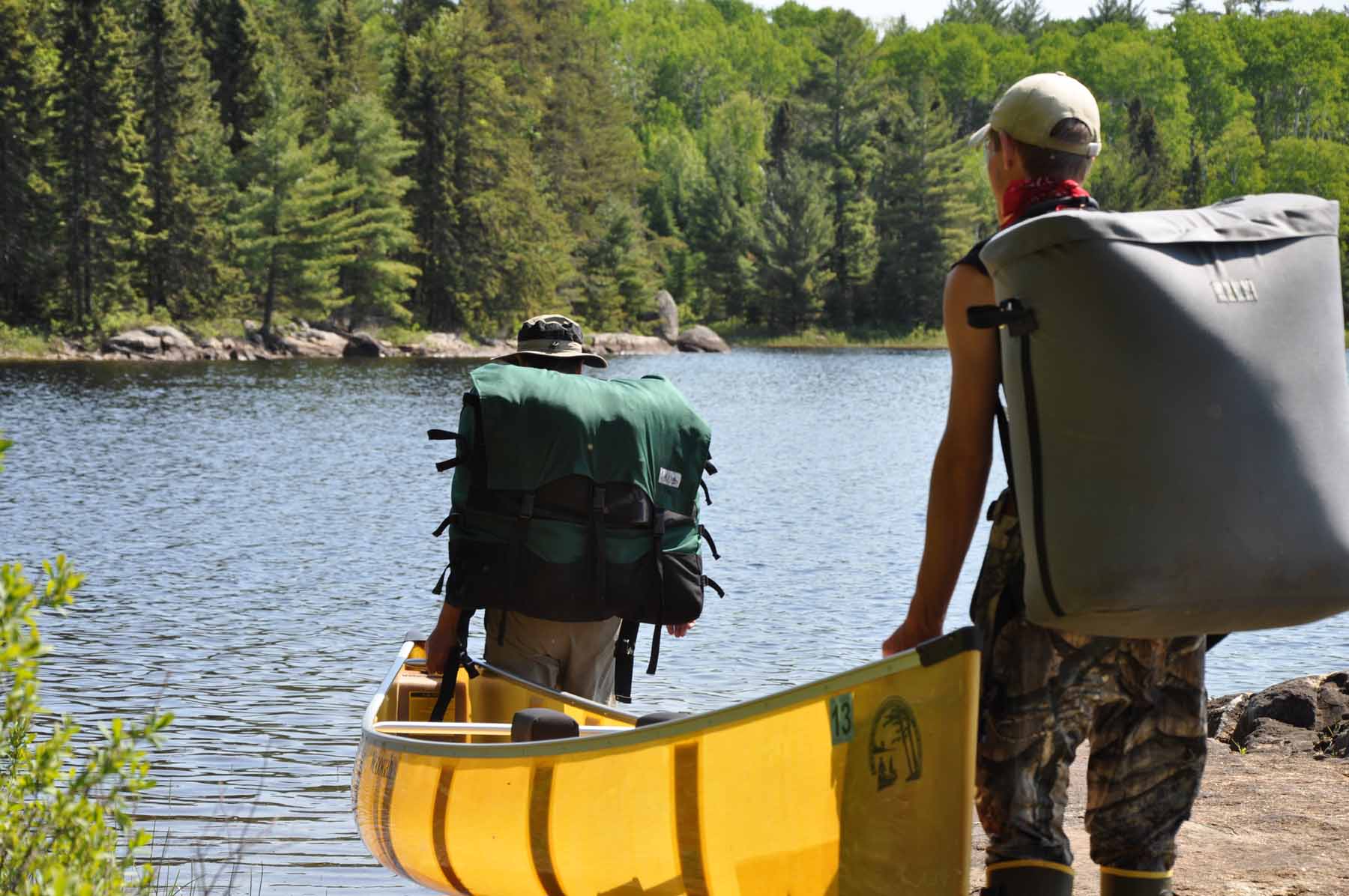Tips for Beating the Bugs in the BWCAW
With the right clothing, equipment, and planning, you can enjoy the Boundary Waters during bug season.
With the right clothing, equipment, and planning, you can enjoy the Boundary Waters during bug season.

Clothing
Lightweight, loose-fitting, tightly-woven nylon or polyester pants and long sleeve nylon or polyester shirts are the best defense against bugs. Elastic leggings and other tight-fitting clothing offer little protection against bugs because they can bite through them. To protect your face and neck, consider bringing along a mesh head net. They are cheap, compact, and lightweight. For a shirt made specifically to deter bugs in the Northwoods, consider the Original Bug Shirt that includes wrist closures, a drawstring waist, a hood, and mesh arm, side, and face panels. Additionally, when wearing sturdy closed-toe sport sandals, wearing thick wool socks is helpful to keep bugs off your ankles and feet.
Bug repellent
The following three bug repellents are effective and can be used together.
Shelter
Tarps with mesh sides (such as the NEMO BugOut screen shelter we rent) are a great place to take refuge from bugs. They also protect you from weather. These are great for groups with kids or pets and they offer a sheltered place to eat and relax. If sleeping in a hammock, ensure your system is fully bug proof, including preventing bugs from biting through the hammock material from below. Don’t make the novice mistake of leaving your tent door open longer than necessary to enter and exit.
Campsite selection
Pick a site that faces south or west to catch a prevailing wind that reduces mosquitoes at camp. Campsites that are elevated and/or have a steady breeze can help limit bugs. Sites with standing water are typically worse for bugs as puddles are breeding grounds for mosquitoes. Sites with tall grass are typically worse for ticks. Sites near small creeks and streams can be worse for black flies (gnats) in May and June.
Time of year
Mosquitoes typically peak from mid-June through late July. Black flies (gnats) typically peak in late May and early June. Earlier spring and fall tend to be the best time to avoid bugs overall, however they also offer colder temperatures.
Time of day
Mosquitoes are the worst at dusk – just as the sun dips below the treeline. Be sure to have your dinner finished, dishes done, fire doused and camp secured so that you can head for your tent or screened shelter when the mosquitoes come out in force. During peak bug season it’s often not worth fighting the mosquitoes at this time of day – even with bug spray and proper clothing.